This aircraft is my entry to the fictional WWII fighter challenge. It is based off of Lockheed's L-133 which was a proposed jet fighter during World War 2. The USAAF considered the L-133 to be too advanced for the time, and did not pursue the project. L-133
jan 2024 save delete plz
Kiss. K, I, S, S. Keep it simple, stupid. This principle and its many variations are found in use across the world, from animation to engineering, software development, and even, rarely, politics. I’m sure you (y’all) have heard this principle before, [but are you aware of its creator?] It is accredited to a Mr. Clarence Johnson, also known as Kelly. Kelly grew up in a Swedish family in the upper peninsula of Michigan. From his professors at Michigan University to the president of the United States, most of the people who encountered Kelly had such respect and awe for him and his accomplishments. His reign of triumph lasted half a century, and his achievements and innovations are still in service today. It would not be any exaggeration to say he was the most significant figure in American aerospace in the latter half of the 20th century thanks to his revolutionary management style, innovation through simplicity, and desire for the success of others rather than himself. (need to structure sections to more fit these points)
(Walk) Kelly was the seventh of nine children in a Swedish immigrant family in Ishpeming, in the upper peninsula of Michigan. His youth was filled with following the adventures and admiring the inventions of the genius fictional character Tom Swift. The stories of Tom Swift and his innovations heavily influenced Kelly, and by the age of 12, he made it his goal to become an aerospace engineer. He attended the University of Michigan for aeronautical engineering, earning his master's in 1933. (check timing) After graduating, he joined the Lockheed Company as a tool mechanic, making $83 a month. It was here that his true personality began to show; he fought back against the executives and senior engineers at Lockheed, arguing that their Model 10 Electra, the aircraft the company was betting its future on, would fail due to instability. Instead of firing or otherwise silencing him, Kelly’s boss handed him a scale model of the Electra, and sent him back to the wind tunnel at the University of Michigan to prove his theory. He was put in charge of fully exploring and correcting the Electra’s problems. Kelly did just that, redesigning the aircraft to have a twin tail which became a signature of Lockheed aircraft. The Electra was a commercial success. It put Lockheed at the top of the market and Kelly Johnson in the Lockheed engineering department.
Move bozo 10 years later, its 1943, and 33-year-old Clarence Kelly Johnson is Lockheed’s chief engineer. His P-38 lightning fighter and Hudson bomber are fighting the Axis across the world. He had broken norms with both, finding innovative and unconventional solutions to the many problems that come with the cutting edge of technology. In fact, his designs were so revolutionary that a third warplane he designed was turned down by the military because it was quote “Too advanced.” His designs proved he was an innovative engineer thanks to their superiority over similar types on both sides of the war, and proved to Lockheed he was a trusted manager thanks to being consistently under budget and on time. At Eglin, Florida, Col. Roth of the then US Army Air Force leaned over to converse with Johnson in whispers. He ordered Johnson to develop America’s first operational jet fighter in 180 days or less. To give you a point of reference for that number, every other company in the market would take almost a year to produce a working prototype. So to begin designing America's most advanced aircraft to face down Germany’s feared ME-262 in the skies of Europe, the Lockheed company gave Kelly: nothing. This wasn’t exactly new for Kelly, his Hudson, a modified Electra, was the product of 72 hours of lonely, nonstop work in a British hotel. Kelly did what he had done with the Hudson, he went to work; he had a building built in a corner of Lockheed’s plant made with excess crates and spare lumber and rented a circus tent for a roof. He stole, as he called it top engineers and machinists from other projects. He adopted a simple motto for the project: Be quick, Be quiet, and be on time. Thus, in a tent filled with Lockheed’s best people as well as the stench of a nearby plastic factory, America’s first jet fighter was born.
Kelly Johnson was an incredible engineer, a great salesman, and an even better manager. He got his little crew of kidnapped workers and made himself the head clown. Since the jet was a secret project, it was out of the reach of bureaucrats and those pesky controlling Air Force officers. Johnson fought like a dog in a yard to keep his operation as small as possible, basically arguing that four quarters was better than 50 pennies. He ran his circus differently than the rest of Lockheed. He kept all his clowns on the floor. He Put the design dept and engineers on the floor with the people actually doing the building and involved them in the building process so they could resolve issues immediately. As a draftsman finalized a blueprint, he handed it to the machinist next to him. Feedback and analysis were received in real-time. In other words, he made people responsible for their work. Doing this avoided delays, minimized miscommunication, and kept controlling undecisive committees out of the mix. A great manager must be a leader, while he was stern and may have fired a few people out of anger, he cared about his people and kept them safe. As the due date on the board crept closer, Kelly maintained his Sunday rule. Said himself, “You don’t get enough rest, and you get sick.” and jokingly, “The next man I catch in here on Sunday goes [...] to the B-17s.” Sunday was a day of rest and a day of worship . One of his workers put it clearly how it was working under him, correctly claiming “He was poison to any bureaucrat, and a disaster to […] excuse-makers and fault-finders.” The flexibility and responsibility that came from his methods kept the project rolling even after delays and setbacks.
In the crisp early morning of Saturday, January 8, 1944, a group of Lockheed engineers warming their hands in their pockets and kicking at puddles were buzzed by their plane. Johnson himself says the roar of a jet aircraft blasting past him was a totally new sensation. He loved the 500mph display, as did the Air Force. Papers were signed, and production was planned for the Lockheed jet, 37 days ahead of schedule.
Walk Normally, a great achievement like this would be the height of an aerospace engineer’s career. Kelly Johnson, however, is not normal, he did it several more times. His F-104 Starfighter (the most beautiful plane in the world) was the first fighter to travel twice the speed of sound, his SR-71 the first Mach 3 reconnaissance aircraft, and his F-117 Nighthawk the world’s first stealth fighter, were only a few of the great achievements that bore his name. This became a trend with Kelly, his works were labeled as revolutionary, his greatest achievement yet, as well as American and worldwide firsts. Just about everything he made was a path breaker, first of its kind, or record holder. His awards followed this path as well. In 1964, he received the Collier Trophy from President Lyndon Johnson, who said about Kelly “Kelly Johnson and the products of his famous "Skunk Works" epitomize the highest and the finest goal of our society, the goal of excellence.” In 1983, he received the National Security Medal from President Reagan; he was the first aeronautical engineer to receive such an honor. Each of these would be the height of the career for any other person, the very top, but for Johnson, it was another step. He went back to his little circus now known as Skunkworks, due to that awful smell from the plastic factory, and began working on his next project.
Dubbed “The Magical Man” by Al Romig, Kelly Johnson kept his motto of be quick, be quiet, and be on time throughout all his future projects. He continued to enforce complete integrity and trust. Under his leadership, Skunkworks consistently delivered what the Air Force Association called some of the “most valuable instruments for the defense of freedom.”
Move To paraphrase or summarize Kelly Johnson’s 14 rules of management as well as his legacy of other quick and simple principles, Leaders or managers need to keep it simple, maintain integrity and responsibility, and take care of their people. Looking at news or reports on the military aviation industry today, we see words like over budget by millions of dollars, delayed by years, or million dollar programs canceled. The constant here in all these cost overruns, delays, and failures is poor management. according to a source which I have yet to find, is quote about management. Kelly Johnson showed in a somewhat similar time that bad management should not be allowed to become the standard. In doing so, he made Lockheed the apex of American aviation, and America the pioneer of aerospace in the second half of the 20th century. Just like the inventions of his childhood hero, Tom Swift, Kelly’s creations and innovative technologies are now considered commonplace. However, his methods of managing and leading have yet to seep into companies and projects across the country like the kiss principle.
Preliminary
end
Why was America the pioneer of aerospace through the second half of the 20th century? Because of Lockheed. Why was Lockheed the apex of American aviation? Because of Kelly Johnson. Why Kelly Johnson? Because he was a good manager. Why was he a good manager? Because he stuck to his simple rules of management. Why did he stick to these rules of management? Well, to follow his method of keep it simple stupid: he used them because they worked. Kelly’s management style has seeped into companies and projects across the country. Just like the inventions of his childhood hero, Tom Swift, Kelly’s creations and innovative technologies, as well as his methods of managing are now considered commonplace.
END BIOINFO SPEECH
Specifications
General Characteristics
- Predecessor WWII fictional fighter challenge (CLOSED)
- Created On iOS
- Wingspan 64.1ft (19.5m)
- Length 55.8ft (17.0m)
- Height 17.3ft (5.3m)
- Empty Weight 11,921lbs (5,407kg)
- Loaded Weight 14,206lbs (6,443kg)
Performance
- Power/Weight Ratio 1.581
- Wing Loading 26.5lbs/ft2 (129.2kg/m2)
- Wing Area 536.8ft2 (49.9m2)
- Drag Points 9382
Parts
- Number of Parts 92
- Control Surfaces 7
- Performance Cost 377

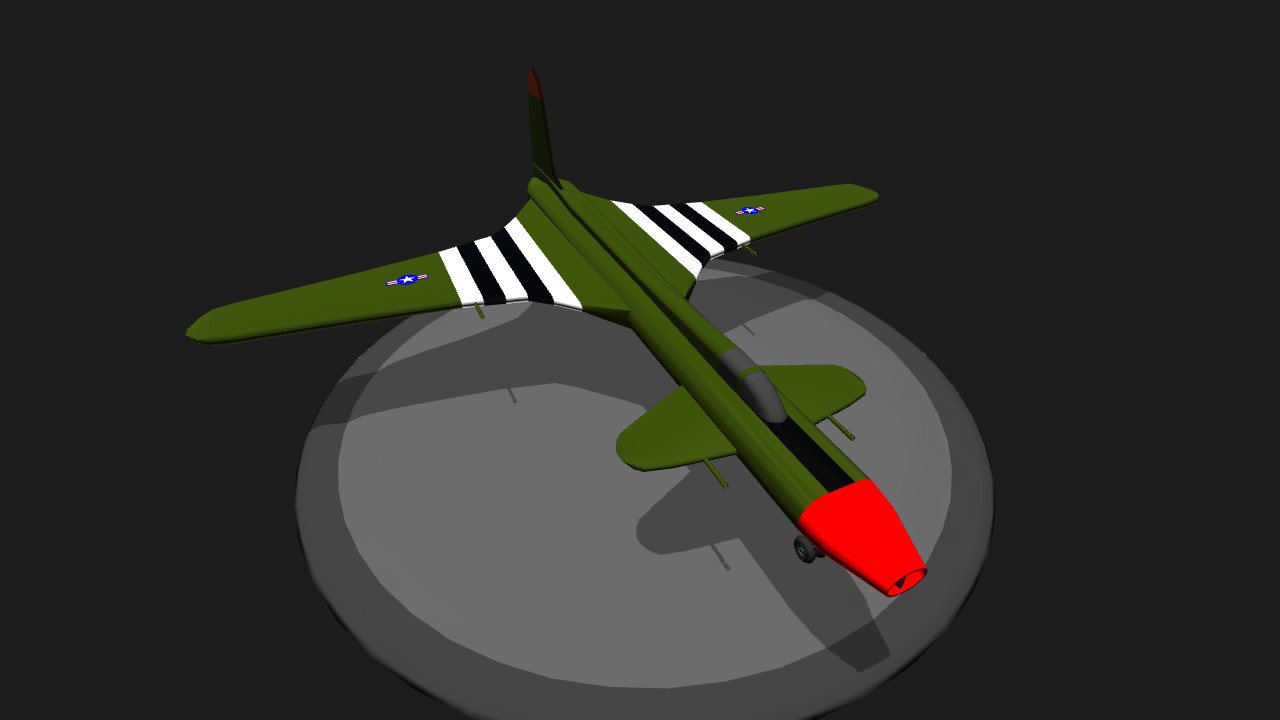
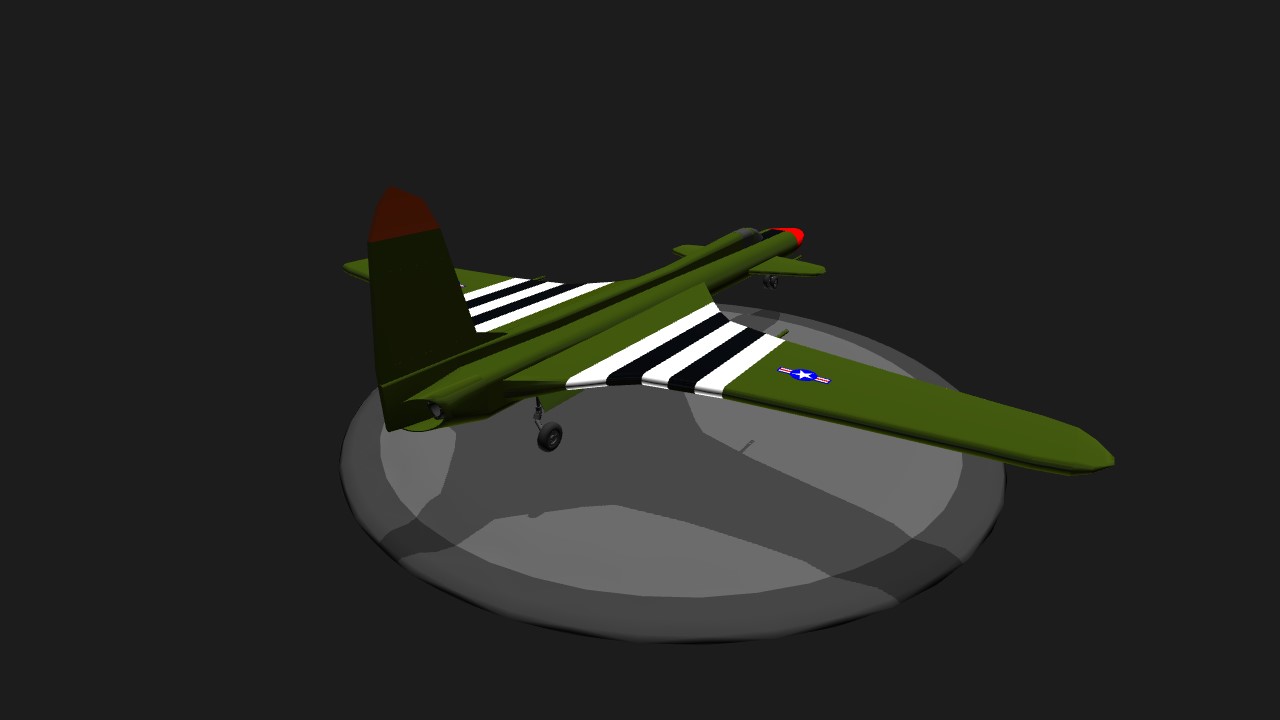
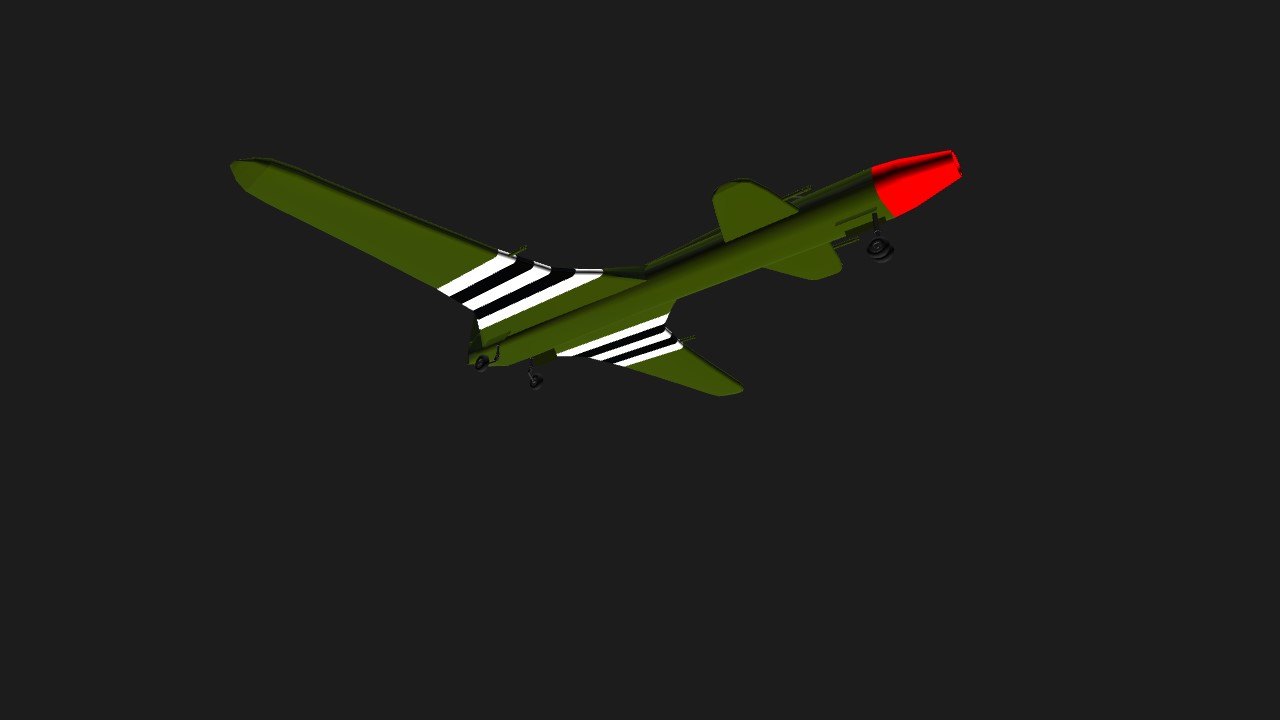
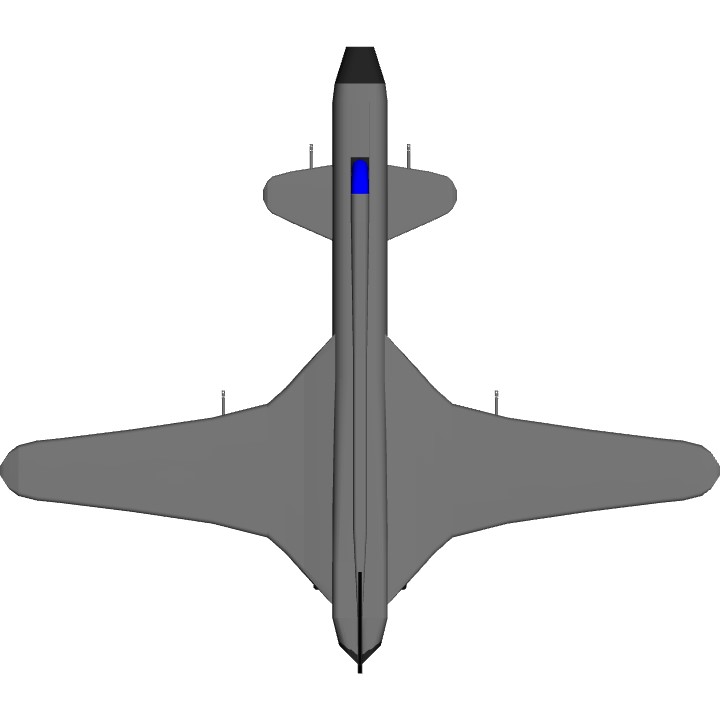

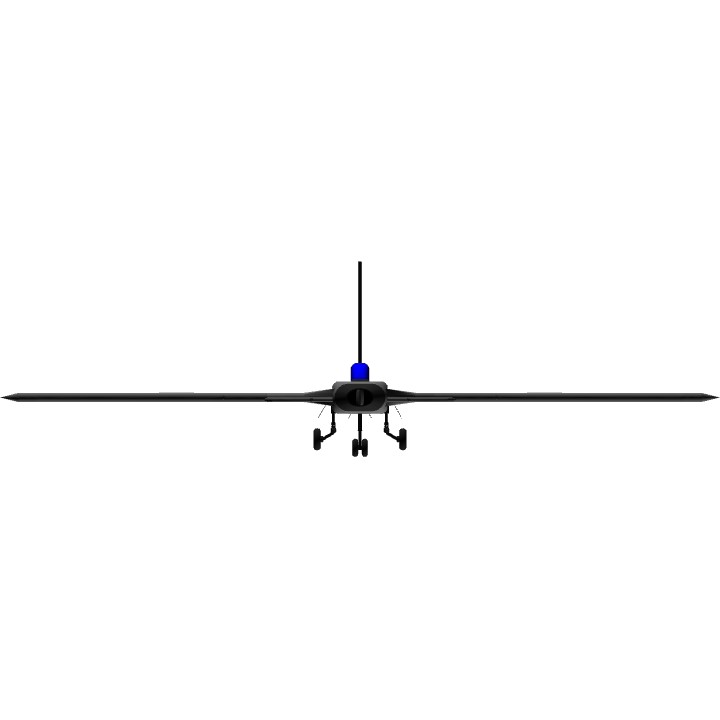
Very cool design, and great job with keeping it in the early jet style and not going overboard with it